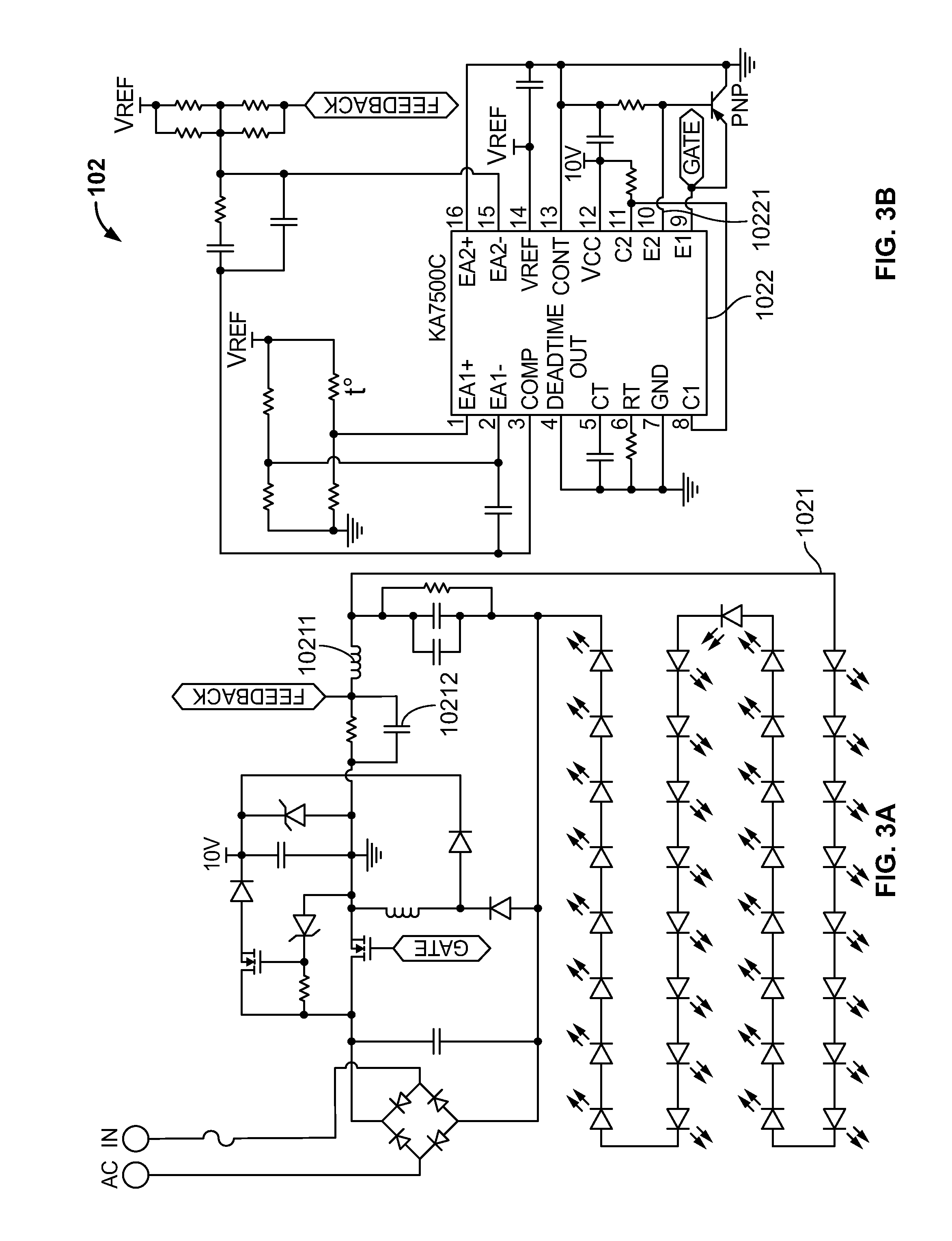LED Light
a technology of led light and diodes, which is applied in the direction of cathode-ray/electron beam tube circuit elements, semiconductor devices for light sources, lighting and heating apparatus, etc., can solve the problems of energy consumption and heat dissipation, the development of led lighting technology still has challenges, and the difficulty of mass production of this kind of led light, etc., to achieve easy breakage, increase brightness, and energy efficiency
- Summary
- Abstract
- Description
- Claims
- Application Information
AI Technical Summary
Benefits of technology
Problems solved by technology
Method used
Image
Examples
assembly example 1
Bottom to Top
[0240]The following assembly instructions are with reference to the PCB template of FIG. 13A. The assembly can be referred to as a “bottom to top assembly” as the top face is the final part to be assembled. For ease of illustration, all the internal components are not illustrated when teaching the assembly. A non-energized plate, such as a non-conductive PCB template 1310 of FIG. 12 is used, along with a light fitting and instant glue. 3M glue was used in one embodiment. Using instant glue on the joining surfaces, attach the non-conductive plate 1310 to the PCB structure as shown in FIG. 13B. With reference to FIG. 2, non-conductive plate 1310 is adhered onto shape S12 in this example.
[0241]FIG. 13C illustrates the steps of assembly along with these instructions. FIG. 13C shows fold lines, edges, and surfaces. Starting with an angle of 180 degrees between surfaces, fold about 63 degrees along bending line 1 to reach an angle of about 117 degrees between surfaces. Make s...
assembly example 2
Top to Bottom
[0246]The following assembly instructions are with reference to the PCB template of FIG. 10. The assembly can be referred to as a “top to bottom assembly” as the final assembly step occurs at the bottom when the light fitting is attached. For ease of illustration, all the internal components are not illustrated when teaching the assembly.
[0247]In this embodiment, a non-conductive plate such as the non-conductive plate 1310 of FIG. 12 is not required. In addition to the star-shaped PCB template, a light fitting and instant glue are required.
[0248]FIG. 14 illustrates the steps of assembly along with these instructions. FIG. 14 shows fold lines, interlocking edge teeth, and screw threads. Starting with an angle of 180 degrees between surfaces, fold about 63 degrees along bending line 1 to reach an angle of about 117 degrees between surfaces. Make similar folds at bending lines 2, 3, 4 and 5. 3. Align and lock the interlocking edges A, B, C, D, and E. Fold about 63 degrees ...
PUM
 Login to View More
Login to View More Abstract
Description
Claims
Application Information
 Login to View More
Login to View More - R&D
- Intellectual Property
- Life Sciences
- Materials
- Tech Scout
- Unparalleled Data Quality
- Higher Quality Content
- 60% Fewer Hallucinations
Browse by: Latest US Patents, China's latest patents, Technical Efficacy Thesaurus, Application Domain, Technology Topic, Popular Technical Reports.
© 2025 PatSnap. All rights reserved.Legal|Privacy policy|Modern Slavery Act Transparency Statement|Sitemap|About US| Contact US: help@patsnap.com



